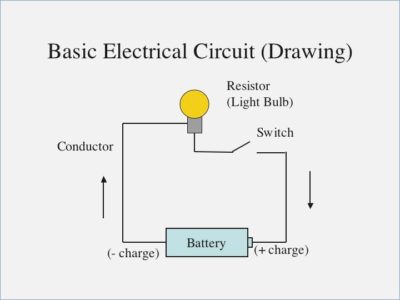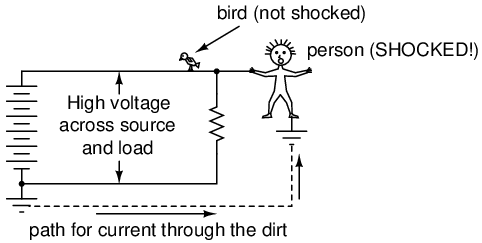updated 28 May 2023
TOC
- Electrical & Electronics Engineering
- Electronics And Robotics
- The Microcontroller
- Circuit
- Tech Terms
- Voltage Vs Amperage
- Electronic Components Used In Our Project
- Arduino and TinkerCAD
Electrical and electronics engineering, the branch of engineering concerned with the practical applications of electricity in all its forms, including those of the field of electronics. Electronics engineering is that branch of electrical engineering concerned with the uses of the electromagnetic spectrum and with the application of such electronic devices as integrated circuits and transistors.
In engineering practice, the distinction between electrical engineering and electronics is usually based on the comparative strength of the electric currents used. In this sense, electrical engineering is the branch dealing with “heavy current”—that is, electric light and power systems and apparatuses—whereas electronics engineering deals with such “light current” applications as telephone and radio communication, computers, radar, and automatic control systems.
source: https://www.britannica.com/technology/electrical-and-electronics-engineering
Electronic devices can simply be controlled by adding a microcontroller. When we program an electronic device to do specific tasks (particularly with sensors), we are now dealing with robotics.
A microcontroller is a compact integrated circuit designed to govern a specific operation in an embedded system. A typical microcontroller includes a processor, memory and input/output (I/O) peripherals on a single chip.
Sometimes referred to as an embedded controller or microcontroller unit (MCU), microcontrollers are found in vehicles, robots, office machines, medical devices, mobile radio transceivers, vending machines and home appliances, among other devices. They are essentially simple miniature personal computers (PCs) designed to control small features of a larger component, without a complex front-end operating system (OS).
source: https://internetofthingsagenda.techtarget.com/definition/microcontroller
In electronics, a circuit is a closed path that allows electricity to flow from one point to another. It may include various electrical components, such as transistors, resistors, and capacitors, but the flow is unimpeded by a gap or break in the circuit.
source: https://techterms.com/definition/circuit
Series Circuit
a series circuit comprises a path along which the whole current flows through each component.
Parallel Circuit
a parallel circuit comprises branches so that the current divides and only part of it flows through any branch.
source: https://www.britannica.com/technology/electric-circuit#ref22644
open circuit - an electrical circuit that is not complete.
electric current - the rate at which electric
charge flows past a point on the electric circuit.
ground - In electronics and electrical engineering, it is
by convention, we define a point in a circuit as a reference
point. This reference point is known as ground (or GND) and
carries a voltage of 0V. Voltage measurements are relative
measurements. That is, a voltage measurement must be compared
to another point in the circuit. If it is not,
the measurement is meaningless.
source: https://www.allaboutcircuits.com/technical-articles/an-introduction-to-ground/
An earth ground is when a circuit has a physical connection to the earth, in order to sink electrons, thereby saving lives. When an electrical system has a direct connection to the earth ground (the 3-prong plug: one is positive, one is negative, one is the earth ground prong), instead of the flow of charge going to our bodies in some instances, it will go directly to earth ground.
source: http://www.learningaboutelectronics.com/Articles/Why-does-a-circuit-always-have-to-have-ground
FYI - Even though one side of the circuit is the live wire, you CANNOT simply touch it even there is no apparent neutral wire completing the circuit: you yourself is standing on the earth ground! A bird will not be shocked by landing on a live wire because it is not touching the ground, so even if there is the live wire, there is no return path completing the circuit and there is no electric shock.
source: https://www.ibiblio.org/kuphaldt/electricCircuits/DC/DC_3.html
hot wire (electrical term) - carries the electricity, also called live wire
terminal - is the point at which a conductor from a component, device or
network comes to an end. It is the point other components can be connected.
Voltage and amperage are two measures of electrical
current or flow of electrons. Voltage is a measure of
the pressure that
allows electrons to flow, while amperage is a measure
of the volume of electrons.
volt - the SI unit of electromotive force, the difference of potential that would drive one ampere of current against one ohm resistance.
ampere - the SI base unit of electrical current.
-
Power Supply - It is the one responsible to power electrical components. We'll be using a Direct Current source, a battery.
-
Wires
-
Light-Emitting Diode - a diode that emits light. A
diodeis a semiconductor device with two terminals, typically allowing the flow of current in one direction only. Asemiconductoris a substance, usually a solid chemical element or compound, that can conduct electricity under some conditions but not others, making it a good medium for the control of electrical current. source: https://whatis.techtarget.com/definition/semiconductor -
Switch (slide switch) - the component that can disrupt the flow of a circuit, thereby giving us control.
Arduino is a prototyping platform consisting of both
hardware and software. When we say prototyping,
we want to create a working model first before
we build the actual product, so that we can test
first whether our idea will work and to reduce the
cost of building the product.
TinkerCAD is an online simulator for our circuit designs. It's just like you are in a Robotics laboratory and there is the complete setup, but this time, it's just virtual. And since it is accessible through a browser, all you need is a device with a browser and an Internet connection and you are good to go: no further setup, no additional downloads.



